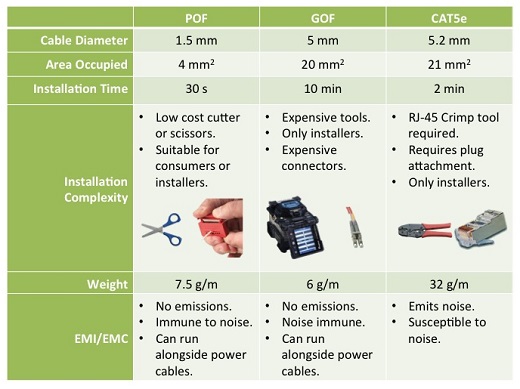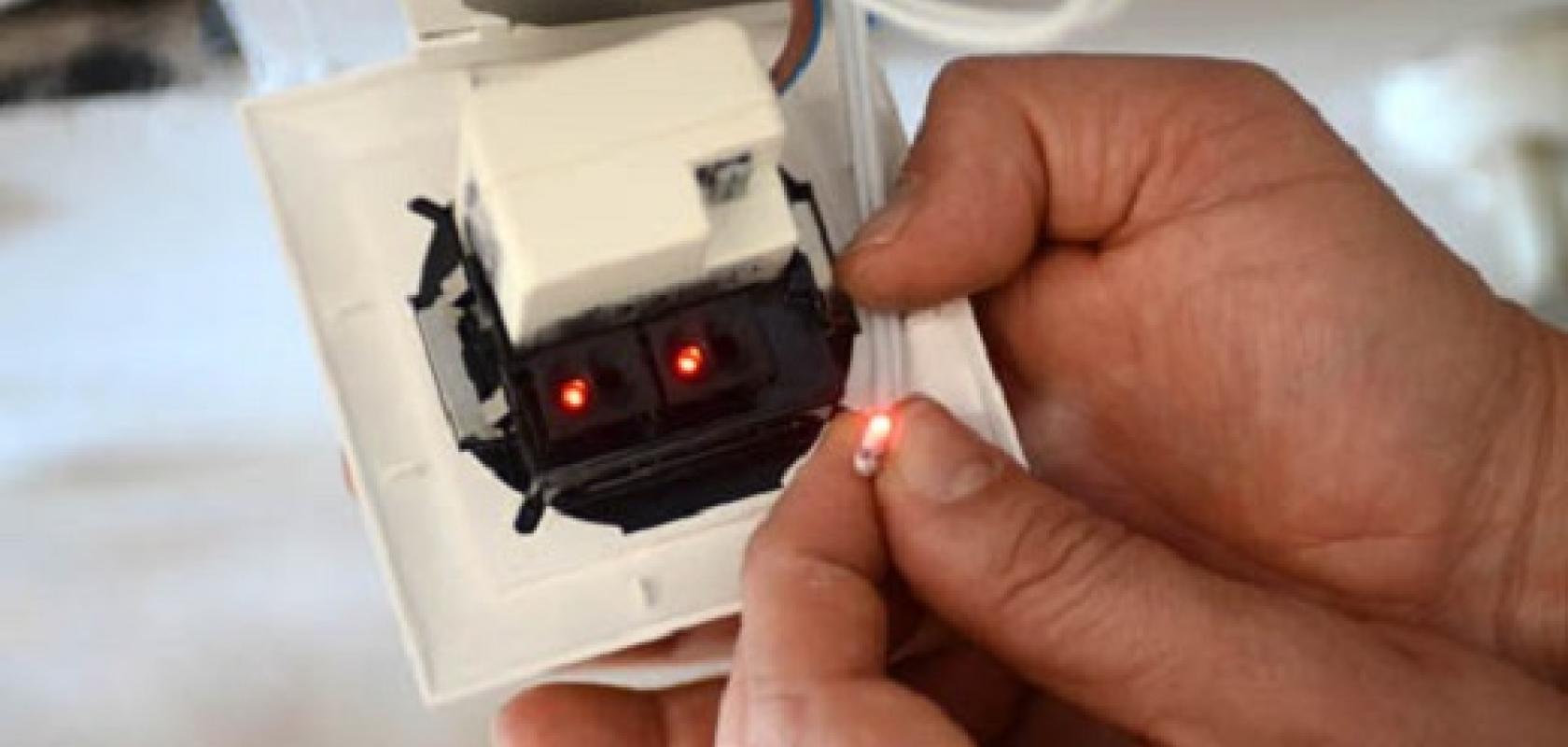Spanish incumbent Telefónica has successfully completed what it describes as a ‘pioneering’ project using plastic optical fibre (POF) in a home network that guarantees gigabit speeds to the customer.
Telefónica has not confirmed a commercial launch date, but online reports suggest the technology could be rolled out to consumers next year.
Telefónica conducted the POF pilot scheme in about 30 homes. Each home network consisted of a wired backbone using POF connected to four wall outlets, with 60GHz Wi-Fi from each access point to provide gigabit-speed, wireless coverage throughout the home.
The hybrid POF and wireless network has been designed to provide high-quality, reliable wireless connectivity around the home, both now and into the future – so that the speed of the in-home network doesn’t fall behind the broadband speeds available over the access network.
Wi-Fi is limited in coverage and performance – issues that can be overcome by installing additional access points via wired connections, usually Ethernet cables. POF provides an alternative medium for the wired backbone that’s cheap, easy to install, secure and immune to electromagnetic interference (see Advantages of Gigabit POF in Home Networks).
The POF cable itself is made from polymethylmethacrylate with an outside diameter of 2.2mm, much thinner than Cat5e Ethernet patch cables. The installation process is so simple (it is sliced with a cutter, and does not require special connectors) that consumers can do it. Like glass fibre, the technology is immune to electromagnetic interference, allowing it to be installed in any existing in-wall conduits in the home, even those that contain power cables.

Table: Advantages of POF in Home/SOHO Networks. Credit: KDPOF
Telefónica’s technological partner in the initiative is chipset provider KDPOF, a Spanish start-up whose technology has been adopted as the Ethernet standard for plastic optical fibre by the IEEE (Institute of Electrical and Electronics Engineers) and the ETSI (European Telecommunications Standards Institute). IEEE 802.3bv “Physical Layer Specifications and Management Parameters for 1000 Mb/s Operation over Plastic Optical Fiber” was approved in February this year.
KDPOF provides a fully integrated Gigabit POF Ethernet transceiver chipset, which is a key component inside the media converter. The media converter provides a power plug and two Ethernet ports to which POF cables can be attached.
The other key part of the home network configuration is the wireless equipment. The standard for 60GHz Wi-Fi, otherwise known as WiGig, was approved at the end of 2016, and routers and laptops containing the technology have started to appear on the market. Tri-band devices (working in the 2.5 and 5GHz bands as well as 60GHz) offer maximum speeds more than 10 times faster than standard 802.11n devices, while maintaining backwards compatibility.
Both concepts – WiGig and POF – have been under development for a decade, and now appear to be reaching a level of maturity that will see them installed in consumers’ homes soon.


